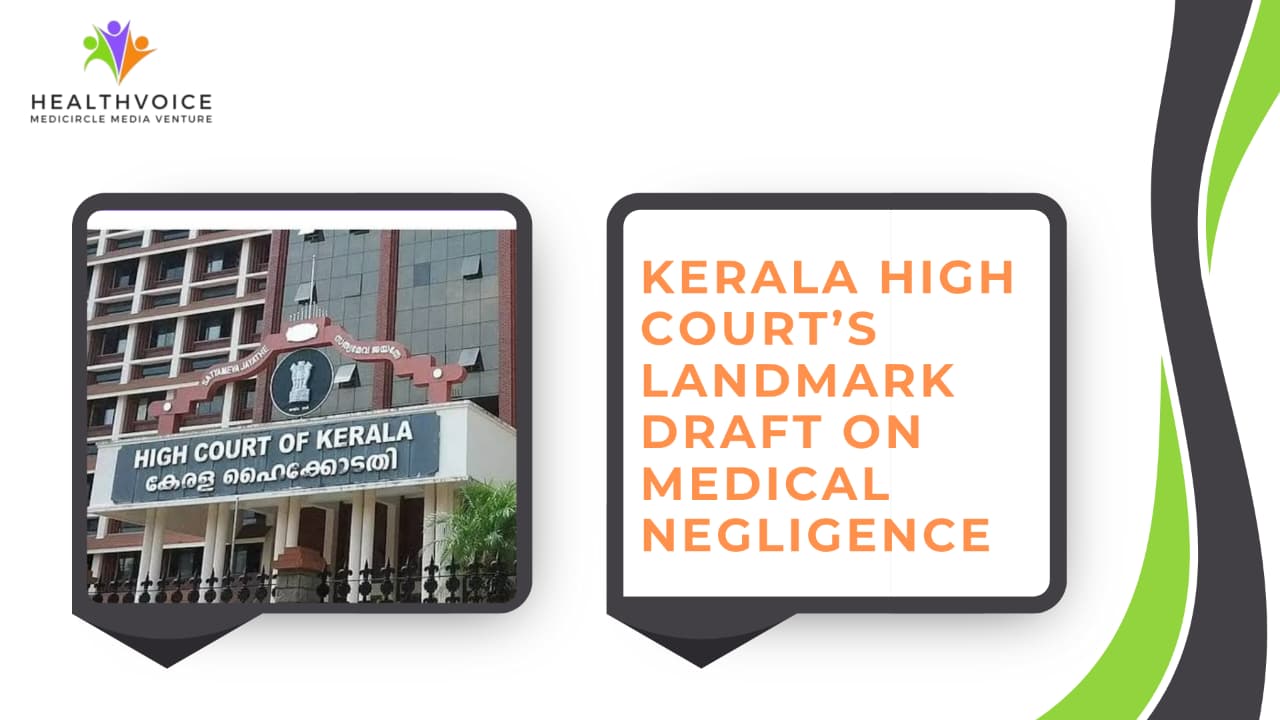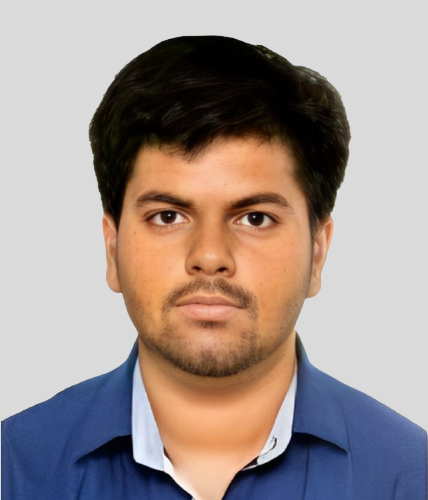Kerala High Court’s Landmark Draft on Medical Negligence
The promise is of a future where trust between doctor and patient can be rebuilt on the foundation of justice that listens to both sides.

The word negligence carries with it a weight that can crush reputations and careers, and nowhere is it more devastating than in the field of medicine. For a doctor, who spends years mastering skills, saving lives, and carrying the burden of trust from society, the mere allegation of negligence is not just a legal matter but an assault on their very identity. In India, the growing tide of litigation against doctors has often painted healers as criminals even before their side of the story could be heard. It is in this backdrop that the Kerala High Court’s recent draft guidelines for medical negligence cases emerge as a turning point. An attempt to balance the scales of justice and ensure that the accused doctor is not condemned without a fair hearing.
The matter came before the court in the form of petitions by two doctors, both facing criminal charges under allegations of negligence. Their plea touched a larger question that has troubled the medical community for decades, whether doctors accused of negligence are truly given a chance to defend themselves in the process of inquiry. Justice V G Arun, who presided over the case, recognized the gap that has persisted since 1986, despite numerous circulars issued by the state government. These circulars had laid down rules about how medical negligence cases were to be investigated, how expert panels should be formed, and how long inquiries should take. Yet, strikingly, none of them granted the accused doctor the fundamental right to be heard.
The new draft guidelines correct this long-standing omission. They lay down that once a complaint of negligence is filed, the investigating officer must immediately secure all relevant medical records and notify the competent authority to convene an expert panel. This ensures that evidence is preserved at the earliest stage and that delays do not cloud the clarity of facts. Each district will maintain a roster of practitioners by speciality so that whenever a panel is constituted, it includes at least one doctor from the relevant speciality. This is a critical safeguard because only someone familiar with the complexities of a particular branch of medicine can fairly assess whether the treatment provided fell within the accepted standards of practice.
The guidelines further state that the expert panel must conclude its proceedings within 30 days of being set up. This timeline is significant because in the absence of deadlines, inquiries often stretch endlessly, leaving doctors in a state of uncertainty and public suspicion. But perhaps the most striking departure is the explicit recognition that both the complainant and the accused doctor must be allowed to present written representations. If, in the panel’s view, there appears to be prima facie evidence of gross negligence, then the doctor must be summoned in person to explain the rationale for the treatment or procedure performed. For the first time, the system acknowledges that doctors deserve to explain the medical reasoning behind their actions rather than being reduced to silent defendants awaiting judgment.
The report produced by the panel will not be a vague document. It must contain the opinion of each expert, and the conclusion must be based on consensus. It must clearly state whether gross negligence can indeed be attributed to the doctor, and if so, identify the specific individual from among a medical team who is held responsible. This is crucial because in multi-doctor procedures, vague accusations often taint everyone involved, even when only one person may have made a questionable decision. A copy of this report must be served directly on the doctor, giving them clarity on the findings rather than leaving them in the dark.
Equally important is the right of appeal. The guidelines specify that both the complainant and the accused doctor will have the right to challenge the findings before an apex expert committee at the state level. This committee too will work within a defined timeframe, ensuring that justice is not dragged out indefinitely. The decision of the apex committee will carry weight and provide a final level of scrutiny that balances accountability with fairness.
For doctors across India, this draft offers a breath of relief, even though it currently applies only to Kerala. It recognizes something that medical professionals have long demanded that before being branded negligent, they must at least be given the right to be heard. Allegations of negligence often stem from unfortunate outcomes rather than actual misconduct. Medicine is not mathematics; outcomes cannot be guaranteed, and even the best treatments sometimes fail. A patient lost on the operating table, a complication during therapy, or a rare reaction to medication may trigger suspicion and anger. Without proper safeguards, this anger easily translates into criminal charges, ruining reputations and careers of doctors who acted within the boundaries of medical science.
The Kerala High Court’s intervention therefore holds wider meaning. It is a message that justice cannot be one-sided, that the dignity of a profession built on trust must be preserved. At the same time, the guidelines do not diminish the rights of patients. Complainants too are allowed to submit their views and to appeal findings that absolve doctors. What the court has tried to do is restore balance in a system where often doctors felt like helpless scapegoats and patients felt like their grievances vanished into bureaucratic delay.
In a country where violence against doctors has become a frightening reality, this fairness is necessary. Across India, we have seen mobs attack hospitals and professionals when treatment fails. Doctors are beaten, threatened, and sometimes forced to flee for safety. The perception that doctors escape accountability has fueled this anger. Conversely, doctors feel abandoned by a system that lets a single accusation tarnish their years of service. By mandating a transparent process with participation from both sides, the draft guidelines can help rebuild trust.
The emphasis on having specialists in the expert panel is particularly noteworthy. Medicine has advanced into highly complex fields, and only someone from the same discipline can accurately judge a doctor’s decisions. A cardiologist cannot evaluate a neurosurgeon, and a general practitioner cannot assess an oncologist’s approach. The inclusion of speciality-specific experts ensures that medical decisions are weighed against accepted practices rather than against unrealistic expectations.
Another important aspect is the requirement that the panel’s conclusion be based on consensus. This discourages individual bias and strengthens the legitimacy of the findings. It also prevents situations where a single dissenting voice can unfairly tilt the outcome. By making the panel accountable to produce clear, reasoned reports, the guidelines enhance the transparency of the process.
Doctors, however, must also recognize that this fairness comes with responsibility. The draft does not shield negligence; it only ensures that genuine cases are distinguished from unfortunate outcomes. If a doctor has indeed acted recklessly, the process will establish it and hold them accountable. What it prevents is the criminalization of every unsuccessful medical outcome.
For the larger healthcare ecosystem, these guidelines have another effect, they could inspire reforms across other states. Once implemented in Kerala, there is every chance that medical associations in other regions will demand similar frameworks. The Indian healthcare system needs uniformity in how negligence cases are handled so that doctors are not subjected to arbitrary procedures that vary from one state to another.
The Kerala High Court’s step also raises an important ethical question: can a profession that holds lives in its hands continue to function under the constant shadow of criminalization? Doctors cannot work in fear. The mental stress of pending cases, public suspicion, and personal humiliation drives many talented professionals away from practice or even pushes them abroad. Protecting doctors from unfair trials is about preserving the country’s medical talent and ensuring that patients continue to receive care from professionals who can practice without fear.
In its essence, the draft guidelines remind us that justice must be fair to both the patient and the doctor. A patient deserves redress when genuine negligence occurs, but a doctor equally deserves protection when they have acted in good faith. The balance lies in careful scrutiny, specialist input, and the right to be heard.
If these guidelines are adopted, Kerala will set a precedent that blends compassion with accountability, fairness with firmness. It will mark a shift away from the era where circulars existed but rights were absent, where doctors were accused but never heard, where patients complained but rarely saw closure. Instead, it will usher in a transparent process where outcomes are respected, but intent and diligence are given their due weight.
For doctors reading this across the nation, the message is that the law is beginning to recognize the need to protect the healers while still holding them accountable when guilt is proven. For patients, the reassurance is that their complaints will be treated seriously but judged fairly. For the system as a whole, the promise is of a future where trust between doctor and patient can be rebuilt on the foundation of justice that listens to both sides.
The courtroom in Kerala may have been the setting, but the echo of its decision travels far beyond. It reminds us that in matters of life and death, fairness is not optional but the very heartbeat of justice
 Sunny Parayan
Sunny Parayan
#healthvoice #MedicalNegligence #KeralaHighCourt #DoctorsRights #PatientRights #JusticeForDoctors #HealthcareJustice #MedicalEthics #DoctorPatientTrust #FairInvestigation #HealthcareLaw #MedicalCommunity #TrustInMedicine #HealthcareReform #MedicalLitigation #DoctorsVoice #PatientSafety #JusticeInHealthcare
